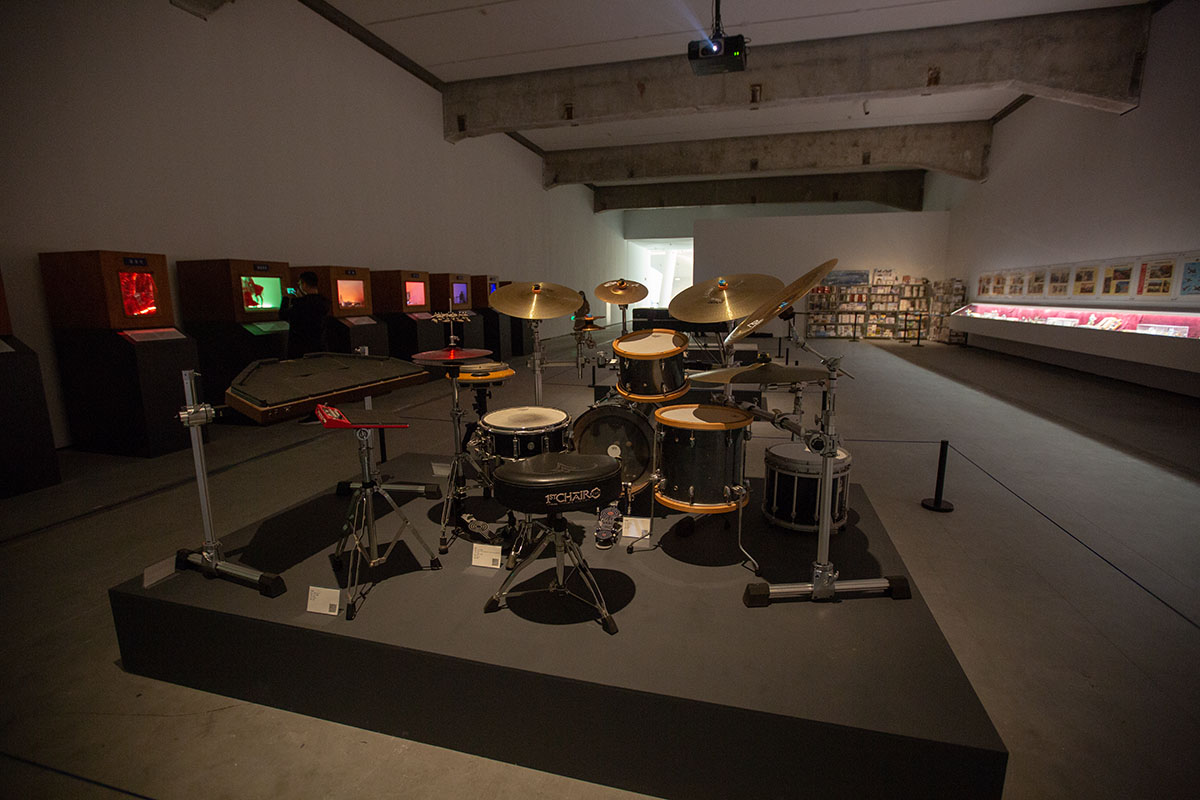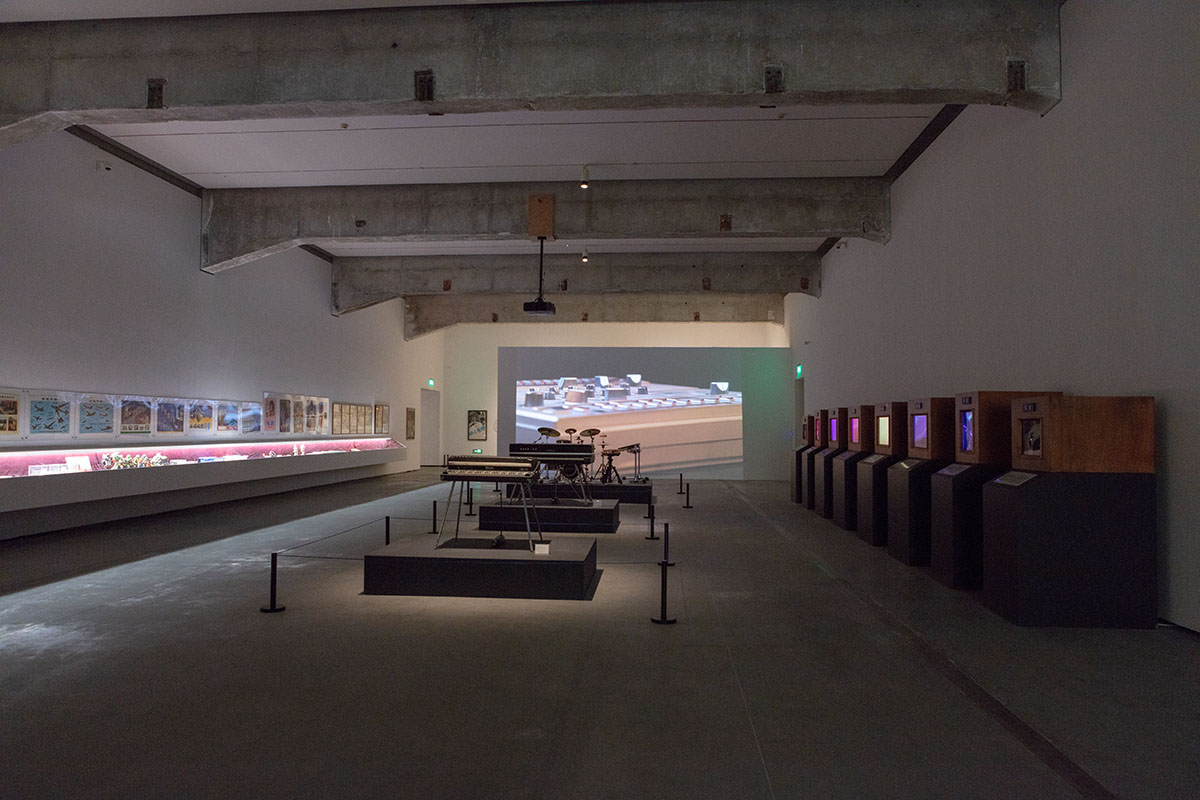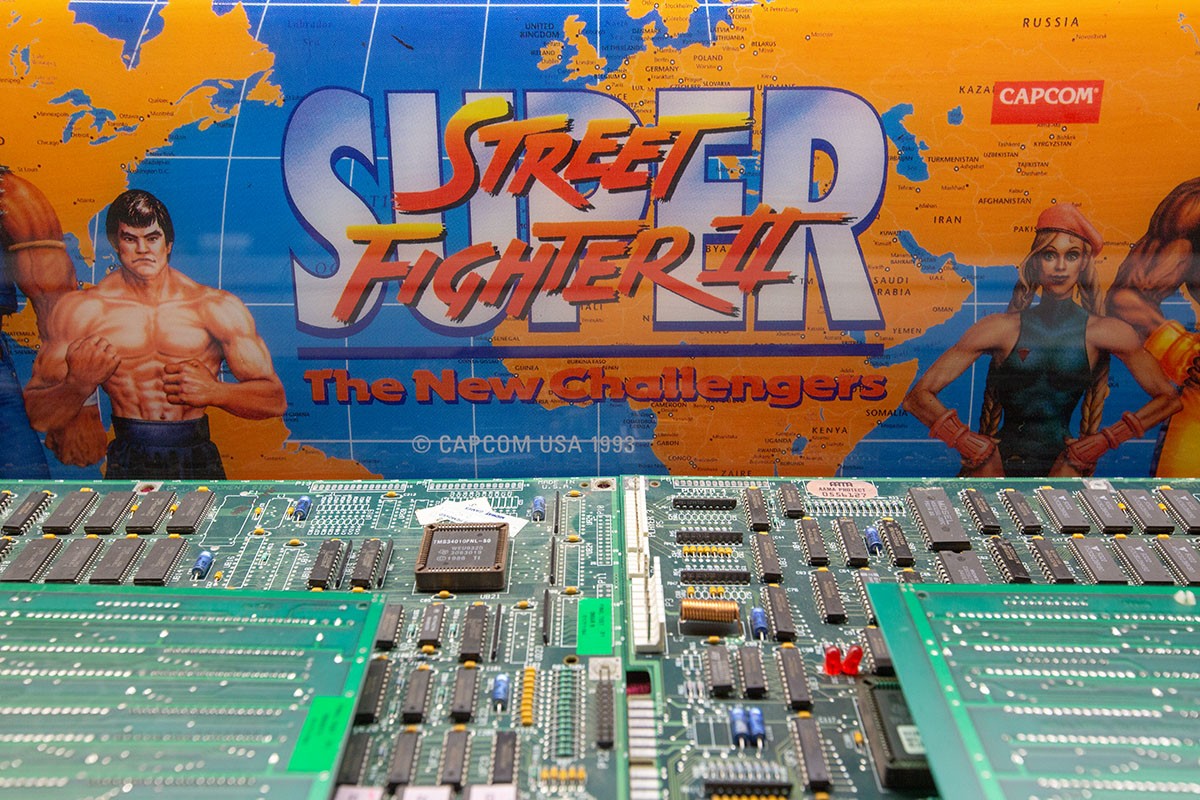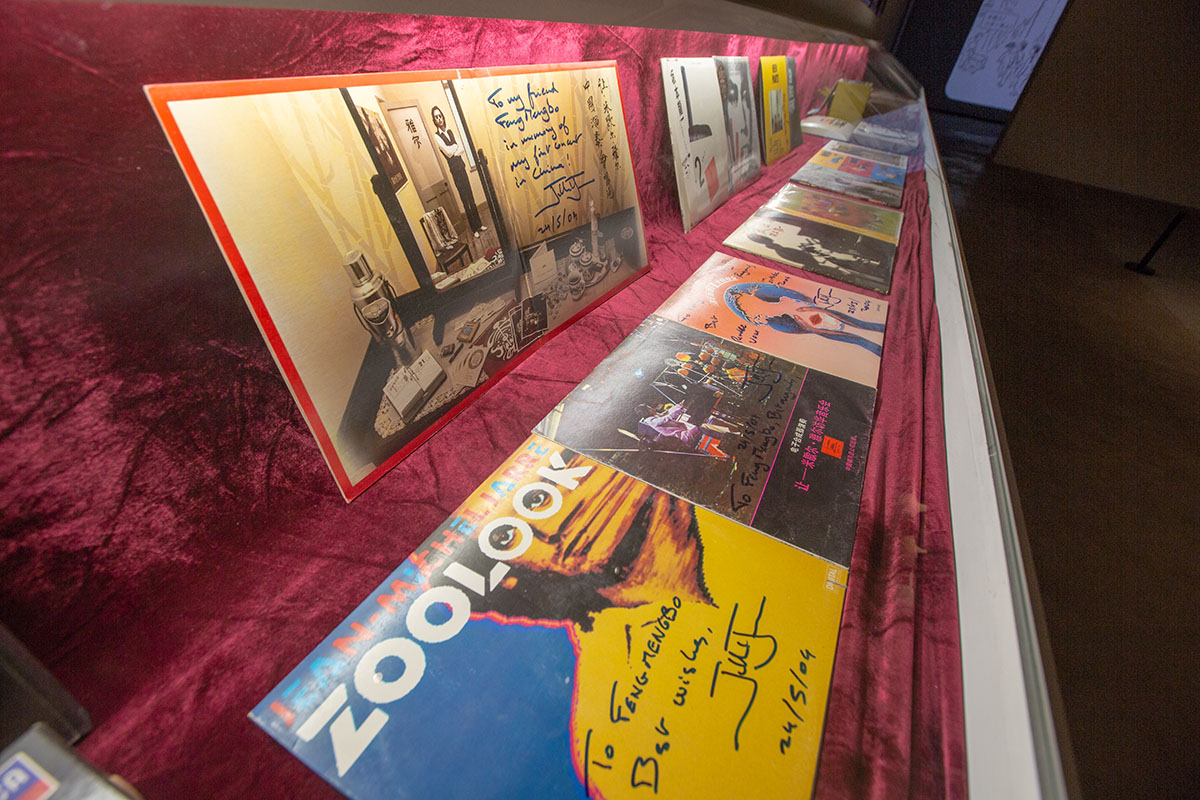
From September 25th, 2020, Beijing Minsheng Art Museum has presented “Duration: Chinese Art in Transformation”, the first permanent exhibition in China featuring contemporary art. The exhibition proposes six key works as sectional titles, namely, Time/Space, Bio/body, Everyday life, Material, Performance, Affection, which explores the artistic practices and realistic situations of Chinese contemporary art from 1979 to 2009 with a perspective on art theories and historic changes, all examined in a dynamic, open-minded and continuous attitude. Focusing on the theme of the exhibition, Beijing Minsheng Art Museum planned and held a series of lectures, talks and seminars, trying to use richer and diversified content as a supplementary perspective for this permanent exhibition.
As a special programme of “Duration: Chinese Art in Transformation”, “Feng Mengbo: A Great Collector” presented artist Feng Mengbo's series of writing, music, painting, film and multi-media full of an exploratory and experimental spirit as well as sorting out the artist's emerging artworks over the past decade. On March 7th, 2021, the exhibition “Feng Mengbo: A Great Collector” was closed as scheduled. On the afternoon of the closing day, two lectures were held at the Activity Center on the first floor of Beijing Minsheng Art Museum, namely, “Media Archaeology & Paintings, Comic Strips and Printmaking in New China”, and “Media Archaeology: Method and Art”.

View of Panel Discussion
The theme of the first lecture was entitled “Media Archeology & Paintings, Comic Strips and Printmaking in New China”. Feng Mengbo and Li Yousong, two artists who have the same commonality of interest in creation, work and life, were invited to have a conversation. Starting from the theme of the first lecture, they discussed the relationship between their own creative cases and the growth experience of artists in depth. While the second lecture invited Tang Hongfeng, researcher at School of Arts, Peking University, to have an interdisciplinary exchange based on the theme of “Media Archaeology: Method and Art” with other guests. Dong Bingfeng, one of the curators of “Duration: Chinese Art in Transformation”, served as the moderator of the lecture and the subsequent panel discussions.
I. Paintings, Comic Strips and Printmaking in New China
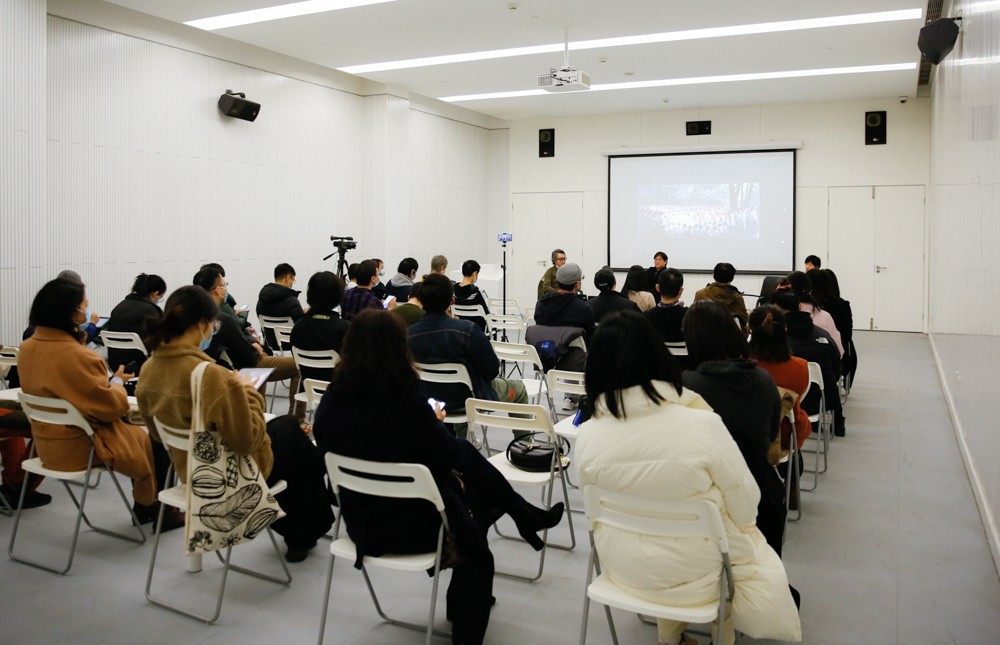
View of the First Lecture
The two guests Feng Mengbo and Li Yousong invited to the first lecture both graduated from the Central Academy of Fine Arts in the 1990s. They share their age and have a similar cultural background, and both have the dual identities of creator and educator. In their respective creations, they also present a strong interest in visual images during the historical period of New China.

Li Yousong gave a speech in the lecture.
The two exchanged ideas around “Paintings, Comic Strips and Printmaking in New China”. By tracing his creative sources, Li Yousong shows that the artists in the 1960s who grew up in the historical period of New China are directly or indirectly influenced by the social atmosphere, culture, art, and lifestyle. Li Yousong analyzed the complex effects of the artist’s creation through case studies, including his father’s work experience in an acrobatic troupe, memories of the stage, acrobatic performances, model operas, design products, posters, movie shots, residential styles, block design, and imported products, etc. It is these cultural art and material life from the historical period of New China that have become the material and inspiration for Li Yousong's creation and imagination.
It is worth noting that in Li Yousong’s work, the response and judgment to time and space are not based on the macroscopic perspective of historical research, but presents as the tendency of individualization instead. For the expression of interest in the early period of socialist construction, Li Yousong’s works show a de-politicized vision, in which personal memory surpasses the macro narrative. Therefore, a certain historical process, event, personal experience, and emotional relationship are formed and interwoven into the works. The artist tries to grasp the image that represents the memory to express their inner emotions, and through this kind of image with a very personal nature, to convey the common feeling of all mankind.
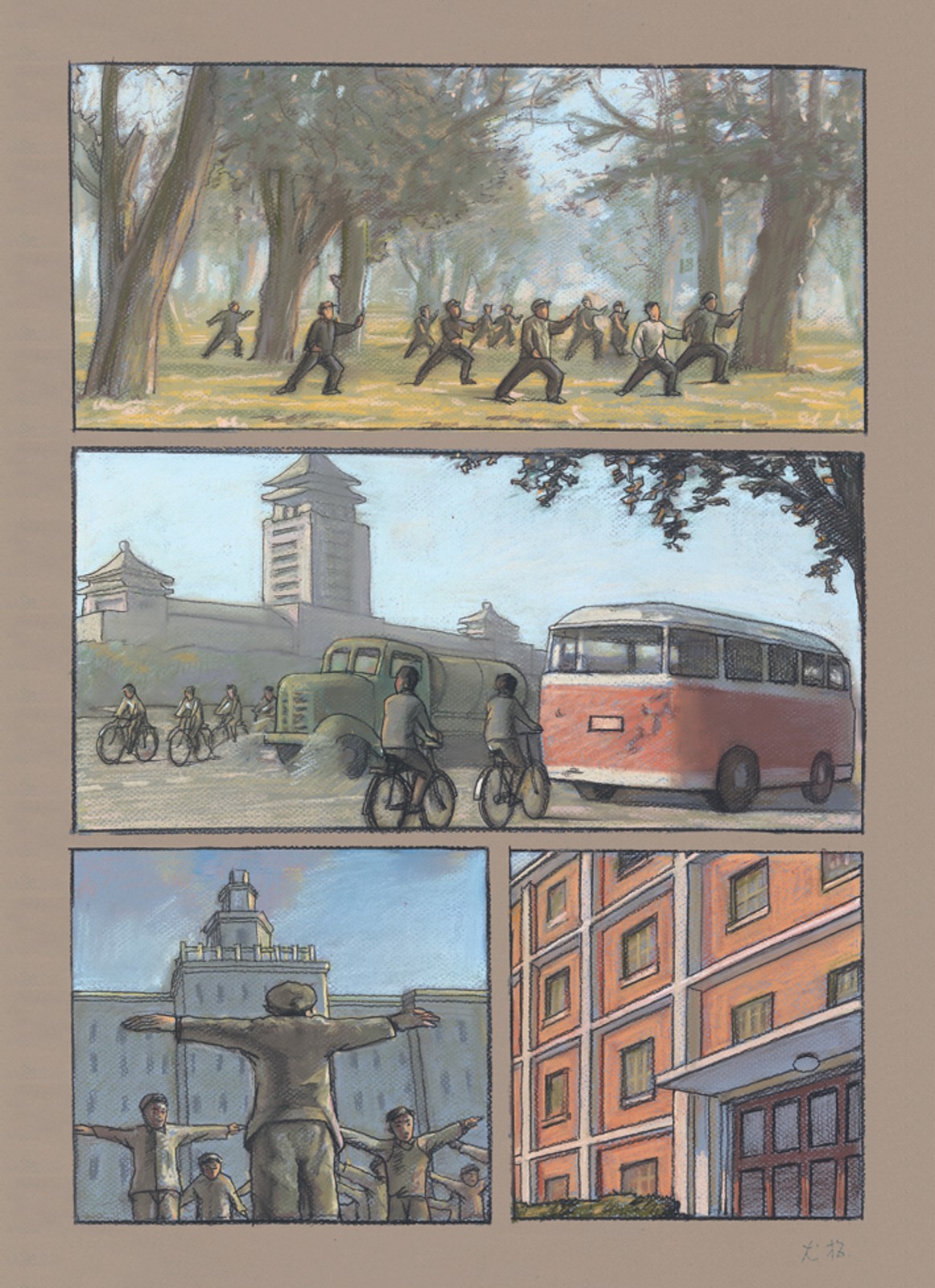


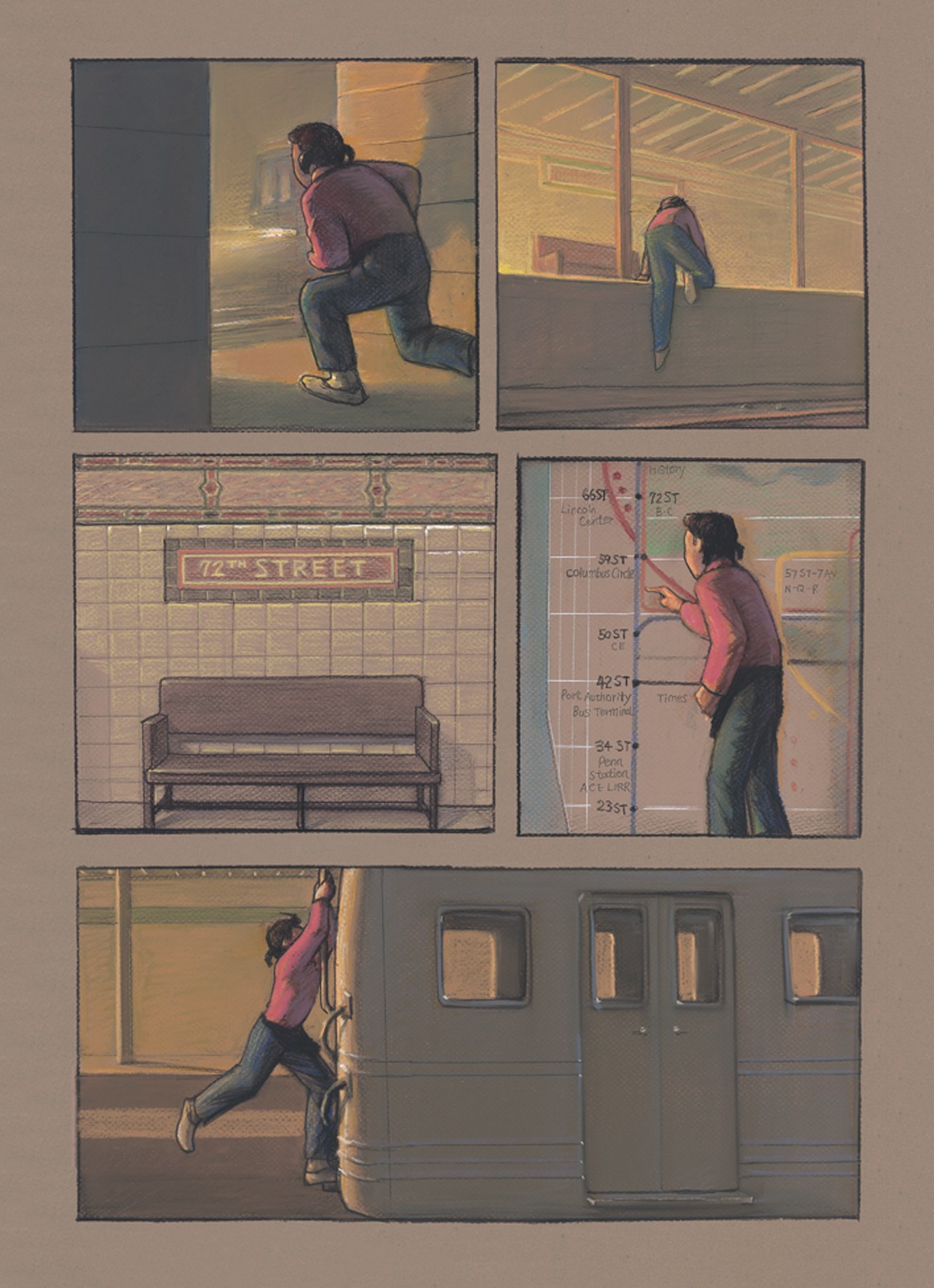
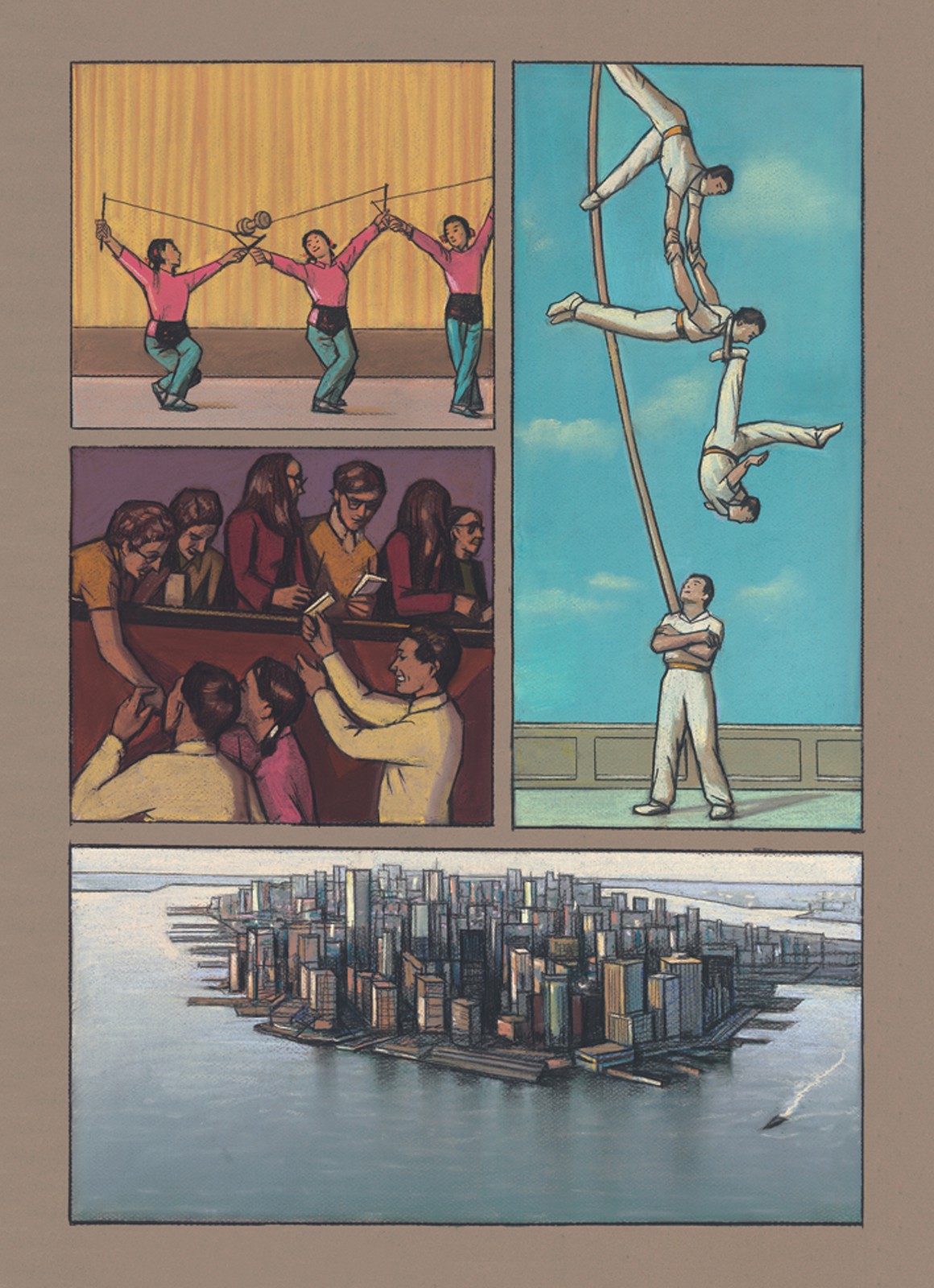
Selected works of Li Yousong’s “Chinese Acrobatics in Manhattan”
Meanwhile, he also mentioned the heritage left by fine art in New China to contemporary artists. For Li Yousong, it precisely lies in the influence and inheritance of aesthetic elements. “Perhaps a certain ideology has passed, but aesthetic elements cannot be subverted, especially its influence on our generation.” This influence is embodied in the continuation of content, form and media. For example, comic strips, an early industrialized print, had an impact on Li Yousong's creation. On the one hand, it determined the artist’s early accumulation of visual elements and aesthetic orientation. On the other hand, it also influenced Li Yousong’s preference for certain forms of “movies on paper” and narrative in his future creations, which led him to create the comic book “Chinese Acrobatics in Manhattan”.
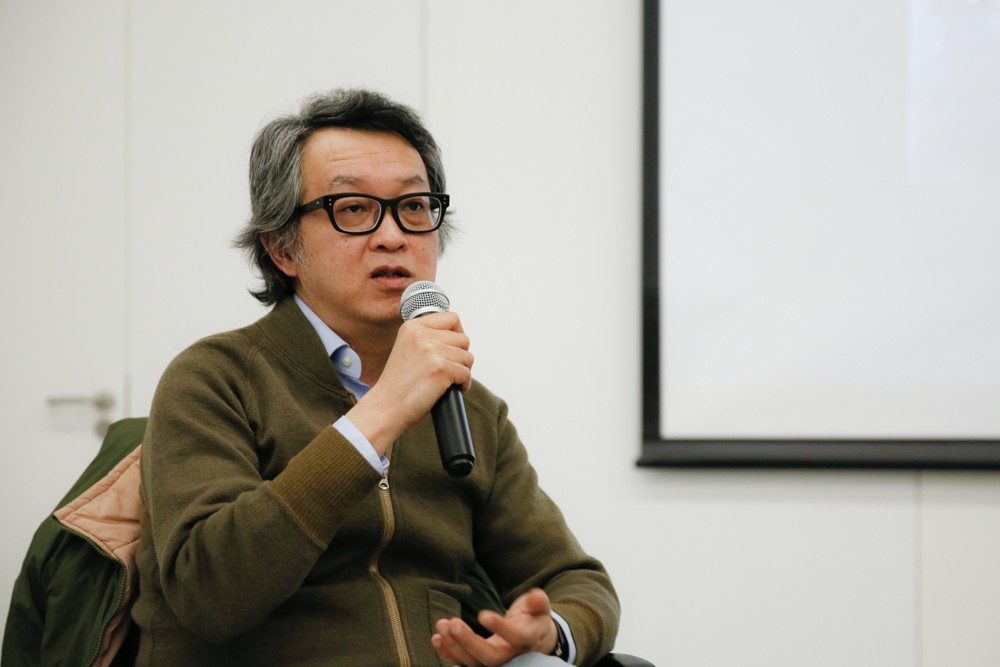
Feng Mengbo gave a speech in the lecture.
In response to Li Yousong’s sharing, Feng Mengbo mentioned that he was once influenced by Li’s “Chinese Acrobatics in Manhattan” and was interested in the creative method of the “movie on paper”. Feng Mengbo started from the “acceptance history” of the term “New China” in his childhood. He believed that the proposing and dissemination of the concept of “New China” was itself related to certain ideals—including the overall progress of politics, industry, science and technology, military, education, literature and arts. Moreover, it connects to the notion of “modernity” to a great extent. Chinese paintings, acrobatics, quyi (Chinese folk art forms), comics and other art media that were not valued in the past have been re-examined and developed during the new era, producing a large number of new works and audiences. Feng Mengbo pointed out from the perspective of personal artistic practice that art history in New China had a profound impact on the generation of the 1960s. It was a part of the historical process and a valuable asset worthy of attention. Therefore, fine arts in New China and the development of contemporary art should not be viewed separately.
Such an impact is also demonstrated in Feng Mengbo’s exhibition “A Great Collector”. The complex exhibits with countless strong lines actually imply the clues of media change and social development, which is also a trace of the origin of the artist’s creation.

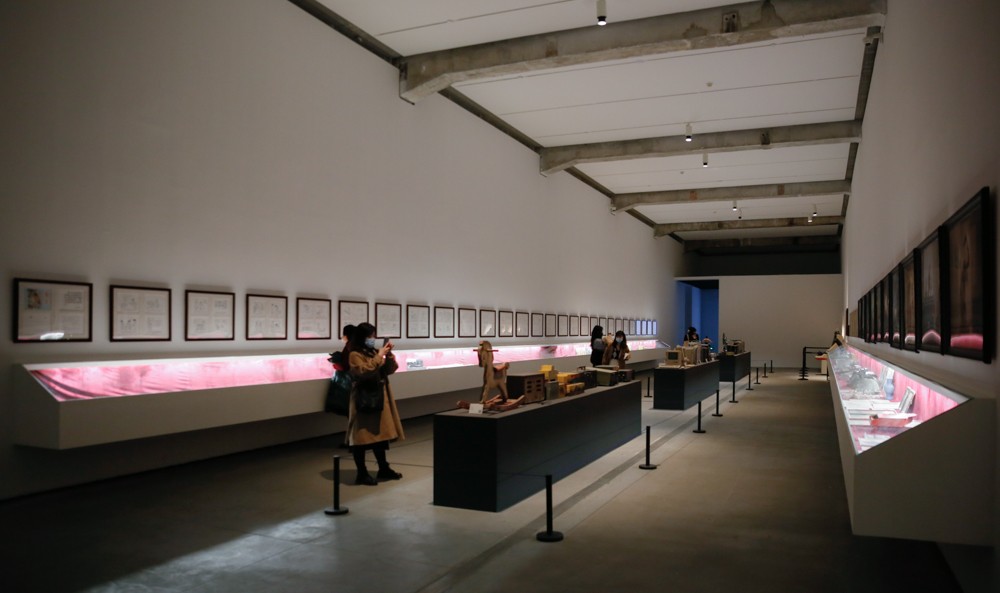

Exhibition View of “Feng Mengbo: A Great Collector”
Taking Xu Beihong as an example, Feng Mengbo discussed the modernity in Xu Beihong’s realism creation. The realism chosen by Xu Beihong captured the spirit of the nation and the times and therefore achieves creativity in the true sense, which also proved that the Western modern schools at that time could not be copied into the reality of China. Taking the popularity of the New Year pictures, comics and propaganda pictures in New China and the influence of Soviet art as examples, Feng Mengbo believed that in the process of a country’s modernization, the creation and consumption of popular culture were inseparable from the social ideals of the time. Similarly, Feng Mengbo understood the relationship between art in New China and the present in this way. He believed that the art in New China contained a lot of originality and advancement, which was a historical source that cannot be ignored. This period of history was not only about the growth model of a new regime and new visual images, but also about the core issue of “modernity”. Therefore, the theory and practice of contemporary art needed to pay more attention to the historical heritage of this stage and complete more relevant research.
Overall, the first section hoped to use case studies to sort out the creative roots of artists Feng Mengbo and Li Yousong, who grew up in the New China period. In fact, the term contemporary did not mean a separation from history. In the dialogue, Feng Mengbo and Li Yousong gave different perspectives on the relationship between the individual and the historical stage in the work through the analysis of the personal creative experience, so as to highlight the other branch of the connection between contemporary art and the history of New China.
II. “Media Archaeology: Method and Art”
In the second dialogue, scholar Tang Hongfeng had a thematic conversation on “Media Archaeology: Method and Art” with Feng Mengbo. Professor Tang Hongfeng has been committed to the theoretical research of “media archaeology” for a long time, and her research overlaps with the topics Feng Mengbo expressed in this project.

Tang Hongfeng gave a speech in the second lecture.
Tang Hongfeng first outlined the different attitudes towards “media archaeology” within and outside the academic circles in recent years, and pointed out that based on years of painstaking research in this subject that the discipline should not stop at the introduction and arrangement of theories, but should pay more attention to the practice of “media archaeology”. She pointed out that Feng Mengbo’s creation contains the practical characteristics of “media archaeology”.
Tang Hongfeng discovered the contradictory characteristics between Feng Mengbo's identity as a new media artist and collector. At the level of the possession of media, the “new” feature of new media artists and the “old” features as pursued by collectors were contradictory. She believed that the dialectical relationship between the new and the old is precisely Feng Mengbo's working logic—the new and the old are mutually negated and mutually generated. This was also the fundamental reason for the special appearance of Feng Mengbo's works. In his works, the medium itself is embodied in a material way. This dialectical relationship was precisely the core thing in “media archaeology”.
Exhibition View
Similar to Feng Mengbo’s creation, this contradiction also appeared in the work of media archaeologists, who often shuttled between the old paper-based archives of history and the forefront of theories. It contained a deeper logic, that is, the mutually provocative relationship between the new and the old. Realistic motivation urged researchers to return to history and generate radical new from the old. This was the reason that media archaeology was also known as “future archaeology”.
From the surface of “media archaeology”, it seemed to be a part of the new historicism—it avoided linear and grand historical narration, but focused on digging out the marginal areas in history. However, Tang Hongfeng pointed out that media archaeology was not only a supplementary narrative of history, but also a search for old factors in new media and discovering positive factors in old things. It aimed to open up a purely intellectualized historical research. Fundamentally, it intended to provide a new philosophy in history to resist the weakening of creativity through the mainstream and rigescent media environment, and helped people imagine a more diverse future in history.
Exhibition View
Tang Hongfeng believed that Feng’s exhibition bore a strong autobiographical character. The exhibition included new and old media ranging from the most traditional text and images to video games and digital technology. The history of contemporary media overlapped with his personal history. All media came from the artist's daily life, and daily objects were transformed into useless and collectible things, forming a media archeology based on the exhibition. In the era of frequent media updates, it brought an inherent impulse to a sort of self-archaeology, and only when people tried to renew themselves do they think of finding answers in history.
In response to Tang Hongfeng's point of view on the media archaeology of the exhibition, Feng Mengbo shared his original intention of collecting in the exhibition. Personal historical memories and emotions were the most important criteria for these collections, while curiosity was Feng Mengbo's greatest motivation, which also facilitated his exploration of media. Regarding the media, Feng Mengbo presented a harsh and cherished attitude, which was what distinguished Feng Mengbo from other new media artists in his view.
The unfinished and open-minded characteristics of “Media Archaeology” attracted Feng Mengbo. Archaeology that began when a medium has not yet been “finished”. He believed that in creating, he can always get inspiration and fun from the media, and comprehending the old media could also deepen the understanding of the new media. The practical experience of new media, on the contrary, could bring more precious feelings of the old media. This was what he concluded through the practical experience and what this exhibition and media archaeology have in common.

Colin Siyuan Chinnery gave a speech in the panel discussion.
After two thematic conversations, Dong Binfeng, Feng Mengbo, Tang Hongfeng, Li Yousong, and Colin Siyuan Chinnery conducted a brief summary and exchange on the two dialogues in the subsequent panel discussion. First, Colin Siyuan Chinnery gave his own interpretation of Feng Mengbo's creation. He believed that Feng Mengbo, like himself, belonged to an alternative existence and interest in the field of contemporary art. The prominent feature in his creation lies in his treatment of “time”. Exploring the relationship between individual and time, era and memory in the works was particularly meaningful when China was currently in a special era. Moreover, huge differences between people of the same generation were also apparently recognized around the world. The exploration and expression of time, memory, and emotion can be the basis for a certain method to reach a common point and even a consensus between people. Weakening differences rather than strengthening them may be one of the significant values of culture and art.
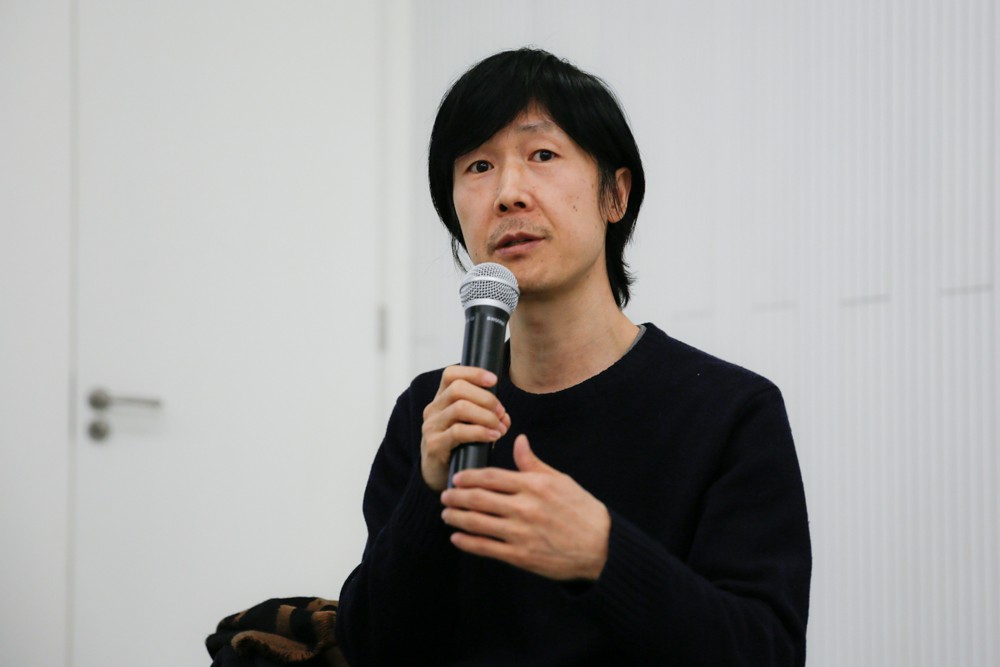
Dong Binfeng served as a host for the lecture.
Dong Bingfeng re-positioned the lecture in the background of the permanent exhibition “Duration: Chinese Art in Transformation” in offering a conclusion. In the past two decades, the creative methods and views on historical narration have been changing. Feng Mengbo's exhibition provided inspiration and possibility, which was an open discussion about artistic concepts, artistic media, and artistic language itself. The two lectures held on the closing day aimed to add richer and more diverse materials to the permanent exhibition of “Duration: Chinese Art in Transformation” through “Media Archaeology” and the practical experience of the two artists, allowing research in different fields and various perspectives to participate in the interpretation of the ever-changing Chinese art.
Text by Mengxi and translated by Emily Weimeng Zhou, edited by Sue.
View of the lecture by Hu Sichen


